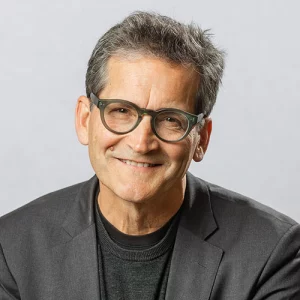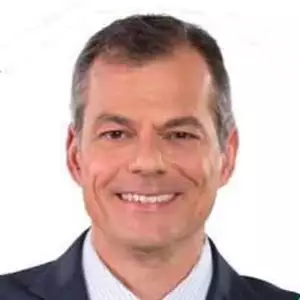Meet Pietro and Jim

Being a CEO is always a dramatic proposition. But Pietro Satriano has arguably experienced more dramatic leadership challenges than most.
When he first landed at food services giant US Foods in 2011, he helped turbocharge revenue by building a modern, personalized, highly responsive merchandising operation from scratch. When he took over as CEO in 2015, he engineered a successful recovery from a blocked merger by instilling an enduring culture of accountability as well as cost discipline and ultimately took the company public.
But his most defining act was still ahead.
In 2020, when the COVID-19 pandemic shut down the global economy, US Foods lost more than 50% of its sales overnight. Satriano’s decisive leadership and relentless commitment to building and preserving trust ensured the company’s survival while extending vital lifelines to his workforce and customers.
Satriano recently sat down with fellow BCG senior advisor Jim Hemerling to talk about how curiosity, trust, and the example his father set helped shape his success as a leader.
This interview has been edited for length and clarity.
Jim Hemerling: You’ve seen it all as a CEO. If you had to describe the secret of the success you’ve had in one or two words, what would they be and why?
Pietro Satriano: It’s a hard question to answer. Obviously, there’s some luck involved. Being at the right place at the right time, having the right team, coaches, and mentors. My upbringing also helped. But the two qualities that really helped me in the role were curiosity and trust because leadership is all about judgment and followership. Curiosity helps you develop good judgment over time, while the trust you build with people helps you develop followership—and these are what move organizations, both large and small.
The two qualities that really helped me in the role were curiosity and trust because leadership is all about judgment and followership.
Jim Hemerling: What does the word “trust” really mean to you?
Pietro Satriano: It’s a belief on the part of others that you will do right by them. Growing up, I used to work for my dad, probably more hours than I wanted to, but I learned some valuable lessons. He was a small-business entrepreneur who sold insurance and travel. People would literally line up out the door to talk to him because they knew he would do right by them. They knew he wouldn’t try to sell them something they didn’t need and that he was genuinely interested in giving them the right level of service. I didn’t know it at the time, but it was kind of remarkable. I grew up in that environment, so trust is not a skill that I had to develop. It was part of my DNA.
Jim Hemerling: Like me, you started your career at a boutique consulting firm called Canada Consulting Group (CCG) that was subsequently acquired by BCG. What drew you to consulting in the first place?
Pietro Satriano: Toward the end of [undergraduate] university, I was influenced by a book you may remember—In Search of Excellence, by Thomas Peters and Robert Waterman. And I thought that helping companies solve their problems and making them better was interesting and a great opportunity to learn. I looked at who was in that business [in Canada] and wrote to those companies, and CCG ended up being a good fit.
Trust is not a skill that I had to develop. It was part of my DNA.
Jim Hemerling: You also worked at Monitor Group as a consultant. Then you got your MBA from HBS [Harvard Business School] before moving into what really became the defining focus of your career, the food services industry. Why retail?
Pietro Satriano: From day one at business school, I decided I wasn’t going back to consulting. While I really enjoyed the problem-solving side of consulting, I enjoyed leading teams and trying to implement decisions even more. That led me to pursue a career in general management. My original thought was to be a line manager in manufacturing. But there was a manufacturing recession at the time, and retail seemed like the best place to be a general manager at a young age.
Jim Hemerling: You held various positions with Loblaws and LoyaltyOne. As you made that journey, how did your idea of leadership and what makes a successful leader evolve and change?
Pietro Satriano: In a consulting firm, you’re used to just beating up ideas. I came from the school of “all feedback is good feedback.” But I learned that in a line job you need to have a different balance of encouragement and feedback.
One of the first things I did in retail was spend two weeks in the field. During the first management team meeting after that, the president of the division that hired me turned to me and said, “So, tell us what you learned.” I said, “You know, these back rooms that we have, they’re just a collection of product waste and we should get rid of them.” I thought it was a bold idea of the future. But afterward, he put his arm around me and said, “That’s not how you talk to people. If you really want to have the kind of impact you say you want to have, there’s better ways of doing that.” That was a real lesson for me: learning what it takes to bring people along and explain things to them that seemed obvious to me, not because they were more or less smart but because they had a bunch of commitments and deliverables that I didn’t have to worry about.
The other evolution for me involved how and when I implement decisions. As my mentor used to say, “The right decision at the wrong time is still the wrong decision.”
Jim Hemerling: In those years when you were a line leader, how would you have described your purpose as a leader?
Pietro Satriano: I don’t know if I would have used these words, but I would have said something along the lines of, “I can help the people I work with be successful.” The first time I was a manager of a team in consulting, I remember thinking “I can really help them get their job done more easily than I had in my first experience.” As a line leader [in food services], I hadn’t done the job of the people who worked for me. So, I had to relearn what it meant to be a good leader. As a line leader, it meant helping to synthesize our strategy, get alignment, and figure out what the barriers were.
Leadership by Design: Navigate the complexities of modern leadership
Jim Hemerling: You started at US Foods in 2011 as chief merchandising officer, a period you refer to as your “Act One” at US Foods. What attracted you to that role and that company at that point in time?
Pietro Satriano: I was just struck by the level of opportunity that existed. The food services industry hadn’t really modernized the way other industries had at the time. US Foods was also a number 2 player looking to do things differently. My job in 2011 was to build a merchandising organization that didn’t exist by bringing some of the playbooks I had used in other industries—product innovation, e-commerce, and personalization.
Jim Hemerling: How were you able to unlock all the learning you had acquired previously?
Pietro Satriano: A couple of things really helped. For starters, within six months, four people who had worked for me previously relocated their families to the Chicago area [where US Foods is headquartered]. One was put in charge of a business unit, and the others became heads of product development, e-commerce, and marketing. They worked very well together, and we got a lot done in two years in the industry.
The other thing that really helped—I spent my first month on the job going from market to market, learning this industry, and developing new relationships. When it became clear that we had to create a new organization, I asked the COO at the time to give me his three best VPs once a week for a full day, along with a few presidents for a steering committee, to workshop what we wanted the new organization to look like.
Jim Hemerling: How did you get that group to work together?
Pietro Satriano: My commitment to them was, “Look, we’re not always going to agree, but we’ll always make the decision in this room, not outside this room, and you’ll know why.” Those relationships proved very important to me when I became CEO.
Jim Hemerling: In 2015, you became the CEO of US Foods—what you describe as the start of your Act Two at the company. At the time, it was in an odd place because the FTC had just blocked the acquisition of US Foods by its biggest competitor. Tell us about that.
Pietro Satriano: We’d just gone through 18 months of purgatory waiting for the FTC to make a decision. It was clear at that point that the next step for us was to go public. It wasn’t a Plan B, by the way. It was a Plan A that had been interrupted by the [attempted] acquisition of US Foods. So, while we’d had good revenue growth as a result of Act One, our earnings had not increased at the same pace. So, one of the immediate imperatives for me as CEO was to reduce our costs to develop the kind of trajectory that would make us more appealing to the public markets. But I also wanted to do it in a way that protected the differentiation for which we had become quite well known and the culture that had achieved alignment.
Jim Hemerling: How did you strike that balance between cutting costs without harming differentiation or morale?
Pietro Satriano: As you can imagine, except for the sponsors and the management team, everyone was happy that the merger hadn’t gone through. There was an upswell of positive energy, and we took advantage of that tailwind to institute some tough medicine. We reduced the field from 60 leadership teams to 28 and froze the defined benefit plan. But we made sure people understood why we were doing it, and we treated them well. We also relied on the trust that we, as a management team, had built up over the years to traverse that challenging time and pave the way for a successful IPO.
I remember one meeting in which around 15 presidents had been deselected. I told them that there was a role for them at the company and that while it may not be exactly the role they were hoping for, I wouldn’t be surprised if one day they’re back in the president role. There were a lot of long faces, and of those 15 or so, 6 were eventually promoted to president again and became some of our best presidents.
There was an upswell of positive energy, and we took advantage of that tailwind to institute some tough medicine.
Jim Hemerling: During that time, did you ever wrestle with doubts over whether you were doing the right things and taking the company forward to a stronger future? If so, how did you push past those doubts?
Pietro Satriano: For the first three months, I had what is now known as imposter syndrome. I walked around wondering “Is this real? Am I really in this role?” But that quickly went away. What really helped is that six months before the acquisition was blocked, we already had a good sense that it would not go through. So, we developed a long-range plan, which would be ready to go if that happened. I give credit to my predecessor and mentor for this. He was also there to bounce ideas off for the first two, three months, which was very helpful.
Jim Hemerling: You talked about how you created clarity around cost cutting, what I call the “head” of leadership. But what about the “heart and hands”—how did you inspire people to take this journey with you, and how did you then execute it day by day?
Pietro Satriano: One thing that has served me well over the years is the belief that if you bring together the right people with the right information, you can pretty much solve any problem—or solve what the next step should be if you don’t know what the ultimate answer is yet.
While we had designed the cost reduction plan, there were all sorts of details that still needed to be worked out. There was a team of four of us including myself, the new chief operating officer, the head of sales, and the head of field HR. We would get together in my office at nine o’clock every two or three nights to figure out, “Okay, where do we go from here?” That not only impacted “the head”—what we would do—but how we would develop people’s trust around the plan.
Jim Hemerling: And how did you do that?
Pietro Satriano: We decided people needed to hear from us. Communication and transparency are the foundation of alignment and building trust, and we spent a lot of time in town halls with the 60 presidents and then the 28 [presidents] having them explain why we were doing what we were doing. In hindsight, I would say probably 80% of our time was spent on bringing people along. Developing the plan was the easy part.
In hindsight, I would say probably 80% of our time was spent on bringing people along. Developing the plan was the easy part.
Jim Hemerling: One of the hardest things for a CEO to do is to get a senior leadership team to work together as a well-oiled machine and put the enterprise before their individual units. How did you do that?
Pietro Satriano: We always hired for the what and the how. The what is technical expertise and judgment, and the how is being a team player. We had a set of cultural beliefs that we would measure against being a team player—having integrity, delivering on your promise. The way I would summarize it is I always look for someone who has “low ego.” That’s something else I learned from my predecessor. You get a lot more done when you have low ego.
I always look for someone who has “low ego.”
Jim Hemerling: Low ego sounds obvious, but how do you know when someone has that?
Pietro Satriano: They put the team first. They care more about the name on the front of their jersey than the name on the back of their jersey. It’s hard to screen for this because at the senior level, people are so proficient at interviewing and putting their best foot forward. I used to rely a lot on finding someone who had one degree of separation, who I trusted, who knew the person, or who knew someone who knew the person. I wouldn’t use any references that were given to me by a candidate. I would also have a lot of people interview candidates, so the truth serum would come out.
I did get it wrong a couple of times. When it comes to hiring, no one bats 1,000, but when you strike out, you’ve got to recover quickly. You just can’t wait and wait. It’s amazing how one person can really add dysfunction to an entire team.
Jim Hemerling: By 2020, you’d made progress on the cost agenda and instilling a culture of cost discipline. And then suddenly COVID hit, ushering in what you call your Act Three with US Foods. What was noteworthy about the actions you took during that very challenging time?
Pietro Satriano: A crisis has a way of focusing the mind. That week in March, between that Monday and that Thursday when things started closing, our sales dropped by 56% over four days.
Jim Hemerling: Wow.
Pietro Satriano: We knew we had to do things to save the company. That’s how we thought about it. Maybe that’s too dramatic a thing to say, but that’s how it felt at the time.
I got the right people together by putting a regional president in charge of the COVID Task Force. He was from the south, where they always have hurricanes coming through. He was very good at rapid deployment and crisis management, and we met every day because we had to invent the playbook for what to do. What’s the right number of layoffs and furloughs? Do they get health insurance or not? How do we help our customers?
It was a very challenging period for everyone that I wouldn’t want to go through again. But we did some things that I’m very proud of. I’ll give you a couple of examples. I’m on a walk on the phone with my e-commerce guy, who has all the consultants who are responsible for improving restaurant operations, and they’re all sitting idle. They’ve all been furloughed. But they all want to help. One of them had the idea of helping our customers, the restaurants, apply for the PPP [Paycheck Protection Program]. So, we stood up workshops to help them access those funds, and before too long the restaurant owners started sending us notes saying, “You saved my business.” Another example: we had 15,000 drivers and selectors, and we only needed about 40% of them. So, I leveraged my network of people I knew in retail, called them up and said, “You’re jammed with demand you can’t serve, and I’ve got capacity that I can’t use, so how about I become a temp agency for you?” And we found temporary employment for about a third of the folks we had furloughed.
It [the pandemic] was a very challenging period for everyone that I wouldn’t want to go through again. But we did some things that I’m very proud of.
We also held town halls every couple of weeks. For the first few, we had 12,000 to 15,000 people attend, including their families, because they wanted to know what this meant for them—not only in terms of the company but about the general macro environment. Because of the trust we had built up over time, they were really looking to us as their source of news inside and outside the company.
Jim Hemerling: You got through COVID only to land in the crosshairs of an activist investor. That’s every CEO’s worst nightmare. How did you handle that?
Pietro Satriano: The activist had been a shareholder for a while. He thought that while we had done a number of things to accelerate value creation from a revenue and customer as well as merchandising perspective, there was more we could do from an operations and cost perspective.
I told him I didn’t disagree, but we had chosen to start with the commercial side of things, as opposed to the operational side of things, and Rome wasn’t built in a day. I also said that whether your ideas are exactly the same as our ideas, or different, this will be a big distraction to the company.
So, what I tried to do over that five- to six-month period was try to limit the distraction to the rest of the management team. I would tell them, “If you guys continue to do a good job of meeting our customers’ needs, delighting our customers, and eliminating waste at the same time, then you’re going to make my job easier, and ultimately the activist will go away.” Because whether it’s an activist or a regular shareholder, they want us to create value.
Jim Hemerling: You stepped down as CEO in 2022, and now you have a thriving portfolio career, from board member, to senior advisor, to Harvard University professor. Why did you choose that path and not just go fishing?
Pietro Satriano: One of the most rewarding things for me is having an impact. Six of the people who’ve worked for me directly went on to become CEOs of around 12 companies. The teaching and advisory work allows me to do that in a way that maybe isn’t as profound as when you’re leading a large organization, but in a way that can still have an impact and provides me with some of the flexibility I’m looking for at this stage. The combination of teaching and advising also allows me to be both current and relevant at the same time, so these different projects all have a synergy with each other.





